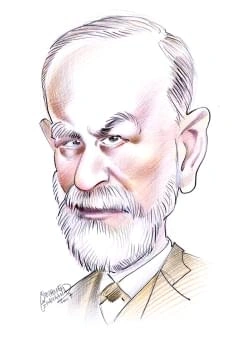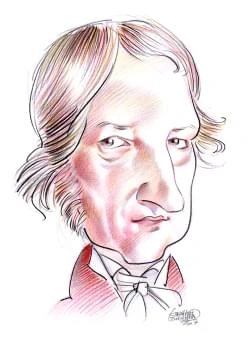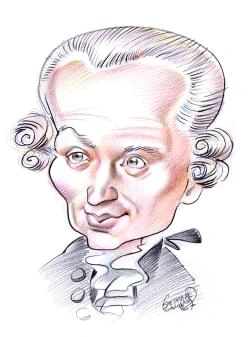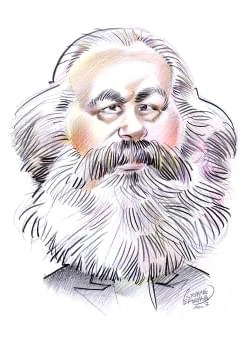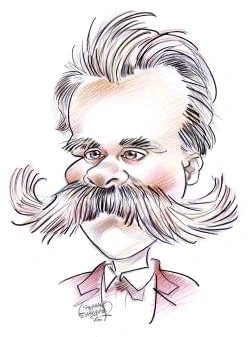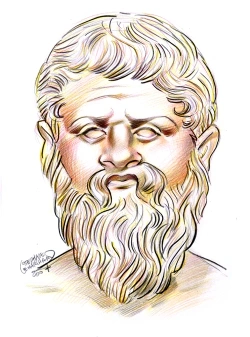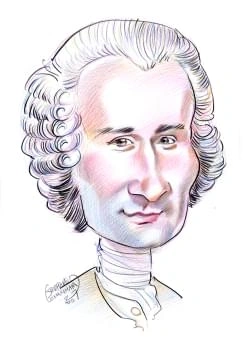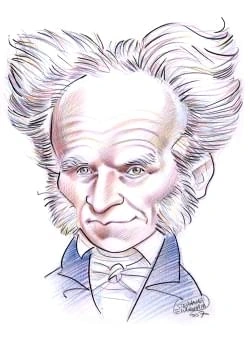541 résultats pour "wats"
-
Czech Republic - country.
enforcement of environmental regulations. Environmental considerations have also led some government officials to promote nuclear energy as a key source of powerfor the country’s future. The Czech Republic produces most of its energy by burning domestic coal. Much of the coal burned is low quality with a high ash and sulfur content—a key componentof acid rain—producing high levels of air pollution. Forests in the Czech Republic are among the most seriously affected by acid rain in all of Europe....
-
Mississippi - geography.
The climate of Mississippi is characterized by long, hot, and humid summers and generally mild winters. The higher lands in the northeast are usually cooler than otherareas of the state. D1 Temperature Average January temperatures range from about 6° C (about 42° F) in northeastern Mississippi to about 12° C (about 54° F) along the Gulf Coast. No part of the stateis entirely free from freezing temperatures, but prolonged periods of extreme cold rarely occur. Temperatures more than 15° C (30° F)...
-
Mississippi - USA History.
The climate of Mississippi is characterized by long, hot, and humid summers and generally mild winters. The higher lands in the northeast are usually cooler than otherareas of the state. D1 Temperature Average January temperatures range from about 6° C (about 42° F) in northeastern Mississippi to about 12° C (about 54° F) along the Gulf Coast. No part of the stateis entirely free from freezing temperatures, but prolonged periods of extreme cold rarely occur. Temperatures more than 15° C (30° F)...
-
South Korea - country.
forest habitat, and overhunting. The Siberian tiger has not been sighted in the wild in South Korea since the 1920s; the Asiatic black bear can still be found in someremote mountain areas. Several species of deer are indigenous to the peninsula, including the roe deer, water deer, and Siberian musk deer. The musk deer, which hasbeen overhunted for its musk glands, is legally protected as a threatened species. Smaller mammals indigenous to the peninsula include the wild boar, red fox, badger,rabb...
-
Greece - country.
minerals, such as chromium, copper, uranium, and magnesium, are relatively small. Greece’s small petroleum deposits, located under the Aegean Sea near the island ofThásos, are rapidly being depleted. There are no significant reserves of natural gas. Greece’s forests, probably abundant in ancient times, have been significantly depleted. Subsequent soil erosion has made reforestation efforts difficult. Although muchof Greece’s soil is rocky and dry, the country’s mountains are interspersed with sm...
-
Indiana - geography.
Michigan in Michigan. There are about 1,000 small natural lakes in Indiana, chiefly in the northern part of the state. The largest is Lake Wawasee, which covers almost 13 sq km (5 sq mi). Inthe central part of the state there are several lakes that were created behind dams on a number of smaller streams. They include Monroe Lake, near Bloomington; Geistand Eagle Creek reservoirs, northeast and northwest of Indianapolis; and Mississinewa and Huntington reservoirs, north of Marion. C Climate Most...
-
Indiana - USA History.
Michigan in Michigan. There are about 1,000 small natural lakes in Indiana, chiefly in the northern part of the state. The largest is Lake Wawasee, which covers almost 13 sq km (5 sq mi). Inthe central part of the state there are several lakes that were created behind dams on a number of smaller streams. They include Monroe Lake, near Bloomington; Geistand Eagle Creek reservoirs, northeast and northwest of Indianapolis; and Mississinewa and Huntington reservoirs, north of Marion. C Climate Most...
-
Native Americans of North America.
addition to smallpox and measles, explorers and colonists brought a host of other diseases: bubonic plague, cholera, typhoid fever, scarlet fever, pleurisy, mumps,diphtheria, pneumonia, whooping cough, malaria, yellow fever, and various sexually transmitted infections. Despite the undisputed devastation wreaked on Indian populations after European contact, native populations showed enormous regional variability in their response todisease exposure. Some peoples survived and, in some cases, even...
-
-
Native Americans of North America - Canadian History.
addition to smallpox and measles, explorers and colonists brought a host of other diseases: bubonic plague, cholera, typhoid fever, scarlet fever, pleurisy, mumps,diphtheria, pneumonia, whooping cough, malaria, yellow fever, and various sexually transmitted infections. Despite the undisputed devastation wreaked on Indian populations after European contact, native populations showed enormous regional variability in their response todisease exposure. Some peoples survived and, in some cases, even...
-
China - country.
North China lies between the Mongolian Steppe on the north and the Yangtze River Basin on the south. It stretches west from the Bo Hai gulf and the Yellow Sea to theeastern edge of the Tibetan Plateau. Administratively, North China includes Beijing and Tianjin municipalities; Shandong and Shanxi provinces; most of Hebei, Henan,and Shaanxi provinces; and portions of Ningxia Hui Autonomous Region and of Jiangsu, Anhui, and Gansu provinces. Humans have lived in the agriculturally rich region of Nor...
-
Poverty.
economic and demographic trends, and (7) welfare incentives. A Overpopulation Overpopulation, the situation of having large numbers of people with too few resources and too little space, is closely associated with poverty. It can result from highpopulation density (the ratio of people to land area, usually expressed as numbers of persons per square kilometer or square mile) or from low amounts of resources, or from both. Excessively high population densities put stress on available resources....
-
Washington (state) - geography.
The crest of the Cascade Range divides Washington into two distinct climatic regions. The area west of the Cascades, which is exposed throughout the year to rain-bearing winds from the Pacific Ocean, has a temperate marine type of climate that is characterized by mild wet winters and cool summers. The Cascades prevent themoist air blowing in from the Pacific from reaching eastern Washington. The Rocky Mountains on the eastern border also represent a climatic barrier. As a result, thesevere winte...
-
Washington (state) - USA History.
The crest of the Cascade Range divides Washington into two distinct climatic regions. The area west of the Cascades, which is exposed throughout the year to rain-bearing winds from the Pacific Ocean, has a temperate marine type of climate that is characterized by mild wet winters and cool summers. The Cascades prevent themoist air blowing in from the Pacific from reaching eastern Washington. The Rocky Mountains on the eastern border also represent a climatic barrier. As a result, thesevere winte...
-
United States History - U.
and improved upon the designs of Arab sailing ships and learned to mount cannons on those ships. In the 15th century they began exploring the west coast ofAfrica—bypassing Arab merchants to trade directly for African gold and slaves. They also colonized the Madeira Islands, the Azores, and the Cape Verde Islands andturned them into the first European slave plantations. The European explorers were all looking for an ocean route to Asia. Christopher Columbus sailed for the monarchs of Spain in 149...
-
United States History - U.
and improved upon the designs of Arab sailing ships and learned to mount cannons on those ships. In the 15th century they began exploring the west coast ofAfrica—bypassing Arab merchants to trade directly for African gold and slaves. They also colonized the Madeira Islands, the Azores, and the Cape Verde Islands andturned them into the first European slave plantations. The European explorers were all looking for an ocean route to Asia. Christopher Columbus sailed for the monarchs of Spain in 149...
-
Hawaii (state) - geography.
limestone along the coast. The volcanoes of the Hawaiian Islands are all so-called shield volcanoes, or lava domes. Unlike the volcanoes of Alaska and South America, those of Hawaii were notcreated by very explosive eruptions. Formed mostly by lava flows, they are great rounded mountain masses, rather than steep-sided cones. Mauna Kea, dormant forcenturies, is the highest mountain in the state. It rises to 4,205 m (13,796 ft) above sea level, and its summit is dotted with cinder cones formed by...
-
-
Hawaii (state) - USA History.
limestone along the coast. The volcanoes of the Hawaiian Islands are all so-called shield volcanoes, or lava domes. Unlike the volcanoes of Alaska and South America, those of Hawaii were notcreated by very explosive eruptions. Formed mostly by lava flows, they are great rounded mountain masses, rather than steep-sided cones. Mauna Kea, dormant forcenturies, is the highest mountain in the state. It rises to 4,205 m (13,796 ft) above sea level, and its summit is dotted with cinder cones formed by...
-
Sun - astronomy.
A The Sun’s Place in the Milky Way The Milky Way Galaxy contains about 400 billion stars. All of these stars, and the gas and dust between them, are rotating about a galactic center. Stars that arefarther away from the center move at slower speeds and take longer to go around it. The Sun is located in the outer part of the galaxy, at a distance of 2.6 × 10 17 km (1.6 × 10 17 mi) from the center. The Sun, which is moving around the center at a velocity of 220 km/s (140 mi/s), takes 250 million y...
-
Israel (country) - country.
harbor in the northern part of the country, and Ashdod, an artificial deepwater port to the south, serve as the main seaports on the Mediterranean. The port of Elat onthe Gulf of Aqaba provides Israel’s only access to the Red Sea, making it extremely important to the country’s shipping interests. D Natural Resources Although much of Israel’s desert regions contain poor soils, the northern Negev, the coastal plains, and the interior valleys provide patches of productive soils. Anestimated 18 per...
-
United Kingdom - country.
B Natural Regions and Topography The island of Great Britain can be divided into two major natural regions—the highland zone and the lowland zone. The highland zone is an area of high hills andmountains in the north and west. The lowland zone in the south and east consists mostly of rolling plains. The zones are divided by an imaginary line running throughEngland from the River Exe on the southwest coast to the mouth of the River Tees on the northeast coast. The lowland zone has a milder climat...
-
Volcano.
before eruption. Very violent explosive eruptions are called Plinian eruptions, after Roman naturalist Pliny the Elder. These eruptions can last for several hours to daysand eject a large amount of pyroclastic material. Some volcanoes can produce much more energetic eruptions that eject materials farther from the vents because oftheir andesitic and dacitic composition. Andesitic and dacitic lava is generally thicker than basaltic lava. Stiff lava generally produces more-explosive eruptions. B No...
-
Antelope - biology.
antelopes still display complex patterns of behavior, although much of it is instinctive rather than learned. In open habitats, antelopes run a high risk of predation (being preyed upon). To survive they use several kinds of defensive strategy, including living in herds. Herd living ensures that many pairs of eyes and ears are on the alert for danger. Herd living also gives individuals a better chance of avoiding attack, because predators canchoose from many potential targets. When danger thre...
-
Geographic Exploration.
The commercial reason for exploration has been a consistent driving force. In 1492 the great navigator Christopher Columbus sailed west across the Atlantic Oceanseeking a new, shorter, and cheaper route to reach the riches of East Asia, and Portuguese explorer Vasco da Gama circumnavigated Africa for much the same reason.Yet similar investigations of the profitable eastern trade had already been made by Arab sailors. Arab trading ships were sailing from the Arabian Sea to southeasternAsia probab...
-
Geographic Exploration - explorer.
The commercial reason for exploration has been a consistent driving force. In 1492 the great navigator Christopher Columbus sailed west across the Atlantic Oceanseeking a new, shorter, and cheaper route to reach the riches of East Asia, and Portuguese explorer Vasco da Gama circumnavigated Africa for much the same reason.Yet similar investigations of the profitable eastern trade had already been made by Arab sailors. Arab trading ships were sailing from the Arabian Sea to southeasternAsia probab...
-
-
Christopher Columbus
I
INTRODUCTION
Christopher Columbus (1451-1506), Italian-born Spanish navigator who sailed west across the Atlantic Ocean in search of a route to Asia but achieved fame by making
landfall in the Americas instead.
explorers, adventurers, entrepreneurs, merchants, and any others who saw their fortunes tied to the trade winds and ocean currents. Columbus’s brother Bartholomewworked in Lisbon as a mapmaker, and for a time the brothers worked together as draftsmen and book collectors. Later that year, Columbus set sail on a convoy loadedwith goods to be sold in northern Atlantic ports. In 1478 or 1479 Columbus met and married Felipa Perestrello e Moniz, the daughter of a respected, though relatively poor, nob...
-
Christopher Columbus.
explorers, adventurers, entrepreneurs, merchants, and any others who saw their fortunes tied to the trade winds and ocean currents. Columbus’s brother Bartholomewworked in Lisbon as a mapmaker, and for a time the brothers worked together as draftsmen and book collectors. Later that year, Columbus set sail on a convoy loadedwith goods to be sold in northern Atlantic ports. In 1478 or 1479 Columbus met and married Felipa Perestrello e Moniz, the daughter of a respected, though relatively poor, nob...
-
Christopher Columbus.
explorers, adventurers, entrepreneurs, merchants, and any others who saw their fortunes tied to the trade winds and ocean currents. Columbus’s brother Bartholomewworked in Lisbon as a mapmaker, and for a time the brothers worked together as draftsmen and book collectors. Later that year, Columbus set sail on a convoy loadedwith goods to be sold in northern Atlantic ports. In 1478 or 1479 Columbus met and married Felipa Perestrello e Moniz, the daughter of a respected, though relatively poor, nob...
-
Christopher Columbus - explorer.
explorers, adventurers, entrepreneurs, merchants, and any others who saw their fortunes tied to the trade winds and ocean currents. Columbus’s brother Bartholomewworked in Lisbon as a mapmaker, and for a time the brothers worked together as draftsmen and book collectors. Later that year, Columbus set sail on a convoy loadedwith goods to be sold in northern Atlantic ports. In 1478 or 1479 Columbus met and married Felipa Perestrello e Moniz, the daughter of a respected, though relatively poor, nob...
-
New Jersey - geography.
C Soils Broadly defined, all of New Jersey’s soils are podzolic soils; that is, they are acidic and contain fairly high amounts of iron oxides. The soils in northern New Jersey areirregular in quality and contain rock fragments and small stones deposited by the continental glaciers of the last Ice Age. The soils of the inner coastal plain, unaffectedby glaciation, are the richest in the state, while those of the outer coastal plain are generally infertile. The newer soil classification system d...
-
New Jersey - USA History.
C Soils Broadly defined, all of New Jersey’s soils are podzolic soils; that is, they are acidic and contain fairly high amounts of iron oxides. The soils in northern New Jersey areirregular in quality and contain rock fragments and small stones deposited by the continental glaciers of the last Ice Age. The soils of the inner coastal plain, unaffectedby glaciation, are the richest in the state, while those of the outer coastal plain are generally infertile. The newer soil classification system d...
-
Louisiana - geography.
lakes are on the Red River and its tributaries. In addition, small oxbow lakes are numerous in the Mississippi Alluvial Plain. Oxbow lakes are formed when a river cutsthrough the neck of one of its loops, or meanders, thus establishing a shorter course and leaving the former loop as a lake separate from the river. Louisiana also hassome artificially created reservoirs. C Coastline Louisiana’s long and irregular coastline extends along the Gulf of Mexico from the Pearl River on the east to the S...
-
Louisiana - USA History.
lakes are on the Red River and its tributaries. In addition, small oxbow lakes are numerous in the Mississippi Alluvial Plain. Oxbow lakes are formed when a river cutsthrough the neck of one of its loops, or meanders, thus establishing a shorter course and leaving the former loop as a lake separate from the river. Louisiana also hassome artificially created reservoirs. C Coastline Louisiana’s long and irregular coastline extends along the Gulf of Mexico from the Pearl River on the east to the S...
-
-
North Carolina - geography.
The drainage divide in North Carolina follows the Blue Ridge range on the eastern margin of the mountain region. This is called the “Eastern Continental Divide.” West ofthis divide, rivers drain into the Mississippi River through the Tennessee River and other tributaries of the Ohio River. The French Broad, the largest, and the LittleTennessee flow into the Tennessee River. The New River flows into the Kanawha River of West Virginia which in turn flows into the Ohio River. Most of the state’s ri...
-
North Carolina - USA History.
The drainage divide in North Carolina follows the Blue Ridge range on the eastern margin of the mountain region. This is called the “Eastern Continental Divide.” West ofthis divide, rivers drain into the Mississippi River through the Tennessee River and other tributaries of the Ohio River. The French Broad, the largest, and the LittleTennessee flow into the Tennessee River. The New River flows into the Kanawha River of West Virginia which in turn flows into the Ohio River. Most of the state’s ri...
-
Republic of Indonesia - country.
Mahakam in East Kalimantan and the Martapura and Barito in South Kalimantan. Most of these rivers originate in the island’s central massif (mountain mass) and meander through extensive swamps as they approach the coast. Settlements such as Samarinda and Banjarmasin cluster along the rivers, which serve ascommunication routes into the interior. The largest rivers on Sumatra drain from west to east into the Strait of Malacca. In the north, the Asahan River once linked trade between the Batak peo...
-
Goose - biology.
Branta comes from a German word meaning “burned” and all of the geese in this genus have black plumage somewhere on their bodies. The brant, a sea goose that also belongs to this genus, is found on both coasts of North America. Brants are darker than barnacle and Canada geese and similar in size to the smallest Canadageese. Like the Canada and barnacle goose, the brant nests in Arctic regions. But unlike them, it winters chiefly on salt water. Instead of the white cheeks of Canadaand barnacle g...
-
Air - chemistry.
lighting systems, fertilizers, and semiconductors (substances used to make the chips in computers, calculators, televisions, microwave ovens, and many other electronicdevices). A Oxygen More than half of the oxygen produced in the United States is used by the steel industry, which injects the gas into basic oxygen furnaces to heat and produce steel(see Iron and Steel Manufacture: Basic Oxygen Process ). Metalworkers also combine oxygen with acetylene to produce high-temperature torch flames th...
-
Penguin - biology.
B Parents and Offspring Once female penguins lay their eggs, both the parents incubate the eggs. The incubation period varies according to species, ranging from 33 days for the little penguinto about 63 days for the emperor penguin. In most medium-sized penguins incubation takes 35 to 38 days. The incubation routine is highly variable among penguinspecies, although in general both sexes participate in incubation and feeding of young. Male and female Adélie penguins take turns incubating their e...
-
Airplane.
For example, the Anglo-French Concorde, a commercial supersonic aircraft, was generally limited to over-water routes, or to those over sparsely populated regions ofthe world. This limitation impacted the commercial viability of the Concorde, which ended its regular passenger service in October 2003. Designers today believe theycan help lessen the impact of sonic booms created by supersonic airliners but probably cannot eliminate them. One of the most difficult practical barriers to supersonic fl...
-
Sri Lanka - country.
acacias, and orchids are found in many areas. The animal life of Sri Lanka includes 88 species of mammals, 21 of which are threatened with extinction. The Asian elephant, cheetah, leopard, and several species ofmonkey are endangered and officially protected. The island’s many species of primates include the long-tailed langur, toque macaque, and slender loris. Other mammalsinclude the sloth bear, several species of deer, mongoose, and wild boar. Reptiles are numerous, with 144 known species. Som...
-
-
New York (city) - geography.
The Bronx is the fourth largest and the northernmost of the five boroughs, and the only one on the American mainland. Even so, it is surrounded by water on threesides: Long Island Sound on the east, the Harlem and East rivers on the south, and Hudson River on the west. Encompassing 109 sq km (42 sq mi), it had 1,332,650inhabitants in 2000. Largely residential, the Bronx includes dozens of vibrant neighborhoods. Fieldston is particularly elegant, with great stone houses set among spacious lawns a...
-
Kentucky - geography.
The climate of Kentucky is characterized by warm or hot summers and cool winters. Throughout the year, temperatures do not vary greatly from place to place,although they are generally slightly lower in the Appalachian Plateaus region than elsewhere in the state. Average July temperatures are usually from 24° to 27°C (76°to 80°F) in the central and western areas and from 23° to 24°C (74° to 76°F) in the east. January averages range from below 1°C (34°F) in the northern Bluegrassregion to more tha...
-
Kentucky - USA History.
The climate of Kentucky is characterized by warm or hot summers and cool winters. Throughout the year, temperatures do not vary greatly from place to place,although they are generally slightly lower in the Appalachian Plateaus region than elsewhere in the state. Average July temperatures are usually from 24° to 27°C (76°to 80°F) in the central and western areas and from 23° to 24°C (74° to 76°F) in the east. January averages range from below 1°C (34°F) in the northern Bluegrassregion to more tha...
-
Birds.
Birds need much less sleep than people do. One seabird, called the sooty tern, can fly for years bytaking “naps” that last only a few seconds. Most birds that live on land are active during the day and sleep at night. Owls are just the opposite.They sleep during the day and hunt at night. Birds usually sleep in shrubs, on tree branches, in holes in trees, or on the ground. Most ducks sleep onthe water. Many birds sleep while they are standing. MATING AND BREEDING Many kinds of birds have only on...
-
Seal (mammal) - biology.
remote lakes by swimming thousands of kilometers up rivers from the Arctic Ocean. A few other species such as ringed seals and harbor seals have been found livingyear-round in lakes and rivers near the coasts of Russia, Canada, and Alaska. IV DIET OF SEALS Most seals eat fish and sometimes squid. The leopard seal, an Antarctic species, may have the most diverse diet of all, commonly hunting penguins and other seabirds,smaller seals, as well as fish, squid, krill (small shrimplike crustaceans),...
-
Excerpt from Oliver Twist - anthology.
Now, Mr. Bumble was a fat man, and a choleric; so instead of responding to this open-hearted salutation in a kindred spirit, he gave the little wicket a tremendousshake, and then bestowed upon it a kick which could have emanated from no leg but a beadle’s. “Lor, only think,” said Mrs. Mann, running out—for the three boys had been removed by this time,—“only think of that! That I should have forgotten that the gatewas bolted on the inside, on account of them dear children. Walk in, sir, walk...
-
Detroit - geography.
of German and Irish immigrants. In the first half of the 20th century, the percentage of foreign-born residents declined, even though many immigrants arrived fromeastern Europe. During World War II (1939-1945), both whites and blacks were attracted from the South to work in the city’s defense industries. In 1950 foreign-bornand black residents each made up about 16 percent of the total population. In the five decades after 1950, the city lost almost half of its population, as many white resident...
-
Cat Family - biology.
cats have coats that are mainly brown, yellow, or gray, often with white underbellies. The cubs of many species of cats have spotted coats, which helps hide them ingrass and underbrush from predators. Adult cats that have mainly spotted patterns in their fur include cheetahs, leopards, clouded leopards, jaguars, ocelots, margays, Geoffroy’s cat, and servals. Singlecolor coats are found in lions, pumas, and jaguarundis. Some individuals among leopards and jaguars, and more rarely in other species...
-
-
Fire - chemistry.
were usually natural caves. Eventually people learned to dip branches in pitch to form torches. They created crude lamps by filling a hollowed out piece of stone withmoss soaked in oil or tallow (a substance derived from animal fat). By cooking with fire, prehistoric people made the meat of the animals they killed more palatable and digestible. They learned to preserve meat by smoking it over a fire,vastly decreasing the danger of periodic starvation. Cooking also enabled them to add some for...
-
Poetry
I
INTRODUCTION
Phyllis McGinley
American poet and author Phyllis McGinley composed light, witty verse, much of which deals with family life.
repetition of certain lines and the rhyming of certain lines. The Provençal sestina features a set of six words that end lines (end-words), repeated in a dizzyingly complexpattern. The range of effects created by the poetic line varies tremendously depending on its length, its patterns of repetition, and whether the sentence stops at the end of theline (end-stopped) or carries over the end of the line (enjambed). Many of the earliest examples of Old English poetry feature an accentual line with...
}})
